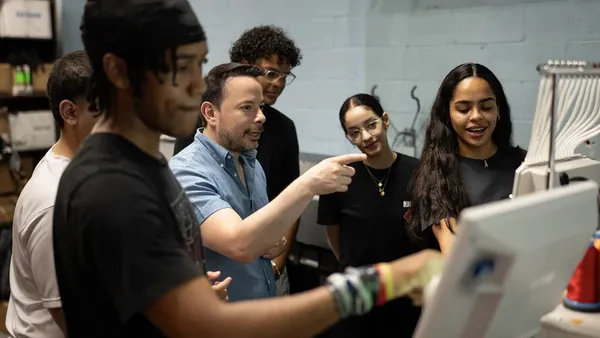Dive Brief:
- Over 90% of New York educators support science of reading instruction, though many lack prior training in the approach, according to a new survey from the Science of Reading Center at State University of New York New Paltz.
- The report says that to ensure proper science of reading implementation, educators need access to adequate learning resources, professional development and administrator-level guidance.
- Addressing student literacy is top of mind for educators. A national survey from Nemours Children’s Health found that over 80% of early elementary teachers are concerned about their students' literacy skills, with many respondents saying they don't feel prepared to tackle the reading crisis.
Dive Insight:
In an effort to improve the reading proficiency of New York's students, Gov. Kathy Hochul announced a 'Back to Basics' reading plan in January 2024. The goal is to make sure students across all districts learn foundational reading skills through new and improved curriculum grounded in the science of reading.
The plan specifies that all school districts must certify that their curriculum, teaching methods and training align with evidence-based instruction to the New York State Department of Education by September 2025.
According to the SUNY New Paltz report, 69% of schools and districts have either adopted or are piloting curriculum aligned with science of reading instructional practices.
Most educators reported they are “very familiar” or “familiar” — 46% and 38% respectively — with the science of reading. However, only 8% of respondents stated that they received prior instruction on science of reading informed teaching practices in their educator preparation program.
Despite this, teachers are working hard to gain more understanding of the topic: 75% reported being “very interested” and 21% were “somewhat interested” in learning more about the science of reading. Most educators also said in the report that they primarily seek learning opportunities to “understand how to teach reading more effectively” and to “meet [their] students’ varying needs for reading.”
To implement the science of reading practices, teachers require focused and thorough professional development, the report said. This professional learning, however, needs to go beyond teaching new curriculum and ensure that educators learn about certain practices like how to screen and assess student skills, determine specific needs and select proven instructional materials.
While 45% of educators reported learning about the science of reading from their schools and districts, many are seeking additional information from outside sources such as books, journals or magazines. Others are talking with friends and colleagues or learning from local colleges or universities.
Rose Else-Mitchell, executive director of the Science of Reading Center, said administrators have the power to implement an aligned system and connect educators with evidence-based curricula, as well as assessments that support and complement it. The report also recommends that school leaders rethink and expand professional learning and work on creating a strong professional learning community.
Although the survey was sent to educators and administrators, respondents were mainly educators. The Science of Reading Center plans to establish this as an annual survey, and it will also release a slightly different administrator-specific survey next year, said Else-Mitchell.
“It'll be interesting to be able to look at this year over year and see what kind of changes, because we know that nothing in education is ever a flick of a switch,” she said. “But something as significant as this, which is sort of re-establishing a shared understanding and a shared evidence base for how to teach reading, will take time as it becomes more systematized.”











